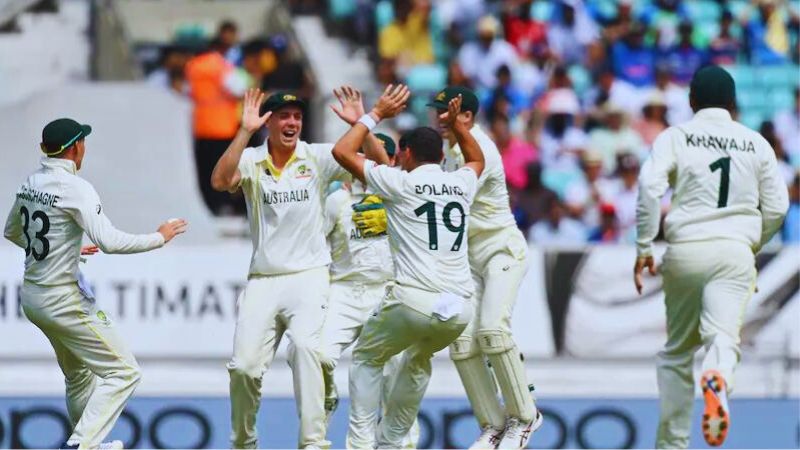Let’s Savor the One-Dayer’s Charm Without Chasing T20 Excitement
In the fast-paced world of T20 cricket, the clash of big scores and the thrilling climax it offers is a defining feature. But the formula turned into a daunting challenge when it extended over to a possible 100 overs.
October 23, 2023
3.4 minutes
Let’s Savor the One-Dayer’s Charm Without Chasing T20 Excitement
In the fast-paced world of T20 cricket, the clash of big scores and the thrilling climax it offers is a defining feature. But the formula turned into a daunting challenge when it extended over to a possible 100 overs.

Cricket’s Evolution: T20’s Thrills and ODI’s Challenges
In the fast-paced world of T20 cricket, the clash of big scores and the thrilling climax it offers is a defining feature. But the formula turned into a daunting challenge when it extended over to a possible 100 overs.
England’s recent performance in Mumbai painted a gloomy picture. They faced difficulties in batting, bowling, fielding, and strategic thinking, resulting in a crushing 229-run defeat. The disappointment was palpable, devoid of the usual glee that follows an English debacle.
We should not blame the originators of the game or its modern reinventors, driven by the bromantic spiritual movement known as Bazball. They put their all into meltdown, even contemplating whether knowing the toss conditions (hot and humid) would have influenced their choice to bat first.
Our own high expectations played a significant role. We assumed the ODI World Cup would deliver riveting matches and even speculated that the match at Wankhede, played before a near full-house crowd, would be one for the ages. However, the result was a hopelessly one-sided contest that could almost be classified as propaganda.
South Africa’s total of 399 set the stage for this game, but they were not alone in producing substantial scores. Other matches in the competition featured scores of 428 in Delhi, 311 in Lucknow, 367 in Bengaluru, 364 in Dharamsala, and Pakistan chasing down Sri Lanka’s 344 in Hyderabad. These are just a few examples of the ten 300-plus totals in 21 matches.
The scoring rate in the 2023 World Cup is unprecedented, with a galloping 5.84 runs per over. The 266 sixes hit so far surpass the totals of 2011 and equal that of 2003. It’s on track to exceed the record 463 sixes from 2015.
While high scoring and big hitting are exciting, close finishes have been noticeably absent. Even a Pakistani chase in Hyderabad ended with ten balls to spare and five wickets in hand. In the tournament’s first 20 matches, teams batting first won with an average margin of 110 runs, while second-batting teams secured victories with about seven wickets and ten overs to spare. The challenge of one-day cricket lies in trying to recreate the T20 excitement over 100 overs. This endeavor has fallen short, as the odds of achieving thrilling climaxes with such high totals are slim. Teams well-versed in T20, make short work of these targets, as demonstrated by India against Afghanistan, Pakistan, and Bangladesh.
The Unique Appeal of ODI Cricket
To rekindle the fading allure of one-day cricket, one should embrace what sets it apart: a day-long compressed Test cricket experience. Achieving this means leveling the playing field and ensuring fair conditions, especially in the face of dew, heat, long tails, and oversized bats.
One of the most riveting contests of this World Cup was the opener between India and Australia in Chennai. The drama extended beyond India’s 2 for 3 score in the chase of 200. The real tension unfolded in the first innings, with Australian batsmen grappling with a challenging turner, creating an atmosphere where something had to give, and it was the Australian batting lineup that did.
The charm of ODI cricket lies in the tension it offers, rather than just tall scores. The two greatest one-day matches of all time, the tied semi-final of 1999 and the tied final of 2019, had scores of 213 and 241. Unfortunately, the 2019 final was marred by administrators imposing T20-style deciders, like a super-over and a boundary countback.
This column deeply appreciates contemporary power-hitting. For instance, at Wankhede, South Africa’s Heinrich Klaasen and Marco Jansen put on a remarkable display with 143 runs in the final ten overs, rivaling even T20 standards. The physical toll, symbolized by Klaasen’s cramping, resembled the endurance challenges of Test cricket. ODIs need not rely on extreme weather to stand out from T20. A pitch with some nuance can make the difference. The “average” rating given to the Chennai pitch in the Australian game by the ICC drew criticism for favouring spin. Rahul Dravid aptly questioned the need for anything else when T20 caters to those who wish to see fours and sixes, a sentiment echoed by a man known for his impeccable defensive skills.








